
May Birthstone: A Complete Guide to the Emerald Birthstone
Those born in May are blessed with the gorgeous green emerald as their traditional birthstone.
The month of May was called Maius in ancient times, likely for the Roman goddess of growth or the Greek goddess of nursing mothers, both named Maia. Ancient Romans also celebrated Floralia in May, a festival honoring the goddess of flowers Flora.
Today, the month of May celebrates mothers, workers, and the rewards of hard work — as they say, “April flowers bring May flowers!”
The May birthstones have even richer history and meanings, which we’ll crack into today as we cover the meanings, properties, and value of emeralds. We’ll also go over some alternative May birthstones!
{{video:https://www.youtube.com/watch?v=ZAC23p6nm70}}

Historical & Cultural Significance of May Birthstone: Emerald
FIrst, what was the original birthstone for May? It depends on who you ask!
Based on the Biblical origins of birthstones, the Hebrew interpretation for May’s birthstone was agate, while the Arabic interpretation was emerald.
In 1870, Tiffany & Co published a pamphlet of “Gregorian Birthstone Poems,” kicking off modern formalized birthstone lists. The March birthstone poem was:
Who first beholds the light of day
In spring’s sweet, flower month of May
And wears an Emerald all her life
Shall be a loved and a loving wife.
The first modern standardized birthstone list, created by the National Association of Jewellers (now Jewellers of America) in 1912 lists emerald as the May birthstone.
The British 1937 list from the National Association of Goldsmiths, along with the version updated in 2013, lists emerald as the traditional May birthstone and chrysoprase (another chalcedony variety like agate) as an alternative.
Why is emerald associated with May?
The Biblical gemstone lists that inspired birthstones listed emerald (in some translations) fourth, corresponding to the fourth month of the year.
But emeralds also reflect the ideals of May: rebirth, growth, prosperity, and fertility. These interpretations of emerald, among others, go back centuries.
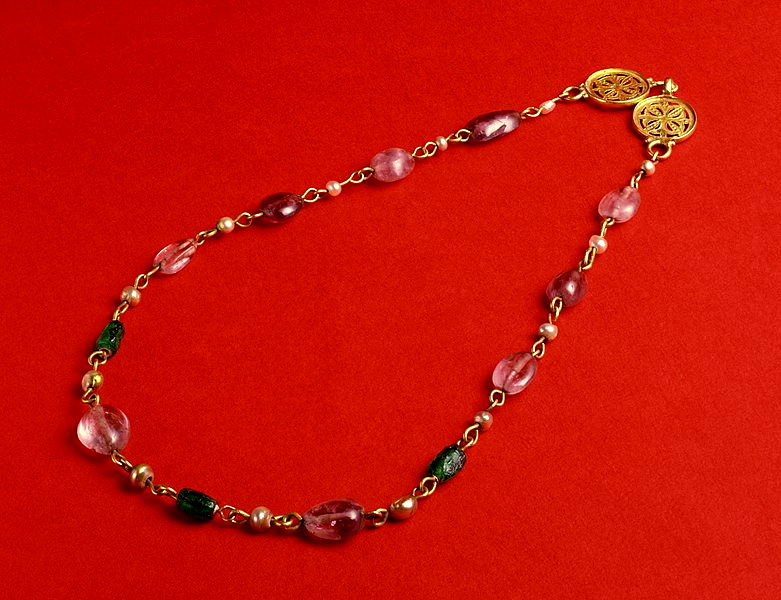 Pictured above: 5th century gold Byzantine necklace with pearls and Egyptian emeralds | Image credit: Walters Art Museum, Public domain
Pictured above: 5th century gold Byzantine necklace with pearls and Egyptian emeralds | Image credit: Walters Art Museum, Public domain
Ancient Emerald History & Mythology
Records of emerald mining date back to ancient Egypt around 1900 to 1500 BC. Egypt remained the primary emerald source until Colombia took over in the 16th century AD.
Ancient names for the stone include:
Bwyrq — Egyptians, “to sparkle”
Barq — Arabs, “flashing”
Baraket — Hebrews, “flashing gem”
Ancient Egyptians considered green sacred, symbolizing agricultural fertility and immortality. Queen Cleopatra famously loved emeralds, adorning herself and her palace with the May birthstone. In fact, in 330 BC, she took exclusive rights to all emeralds mined in Egypt.
Egyptian beliefs about emeralds included the stone granting immortality in the afterlife — often placed in pharaoh’s graves to ensure this — and improving eyesight.
Ancient Greeks and Romans saw emeralds as manifestations of gods and goddesses, particularly as symbols of everlasting love associated with Aphrodite (Venus).
Besides Egyptians, ancient Indians also revered emeralds.
The Sanskrit name for emerald was either marakata, meaning “the green of growing things,” or smarahato, meaning “green.” In fact, the word “emerald” likely derived from an ancient Persian word translated into Latin as smaragdus (meaning “green stone”) before eventually being altered to “emerald.
Ancient Indians referenced emeralds in many religious texts. Written around 1500 to 1200 BC, the oldest Sanskrit and Hindu scripture, The Vedas described emeralds as being lucky and promoting well-being.
In Vedic astrology, emerald or panna is connected to the planet Mercury and believed to boost intellect.
Famous pieces of Indian architecture feature emeralds, like the exquisitely carved “Taj Mahal Emerald” and the carving of goddess Meenakshi created from a single emerald crystal displayed at the Meenakshi Amman Temple.
Lastly, Incas and Aztecs had many legends about emeralds.
One was that the May birthstone formed from an ancient princess’s tears. Another was that the heart of the goddess of good health, Umina, became a huge emerald when she died. They used emeralds for jewelry and religious rituals, often placing the gem in burial mounds.
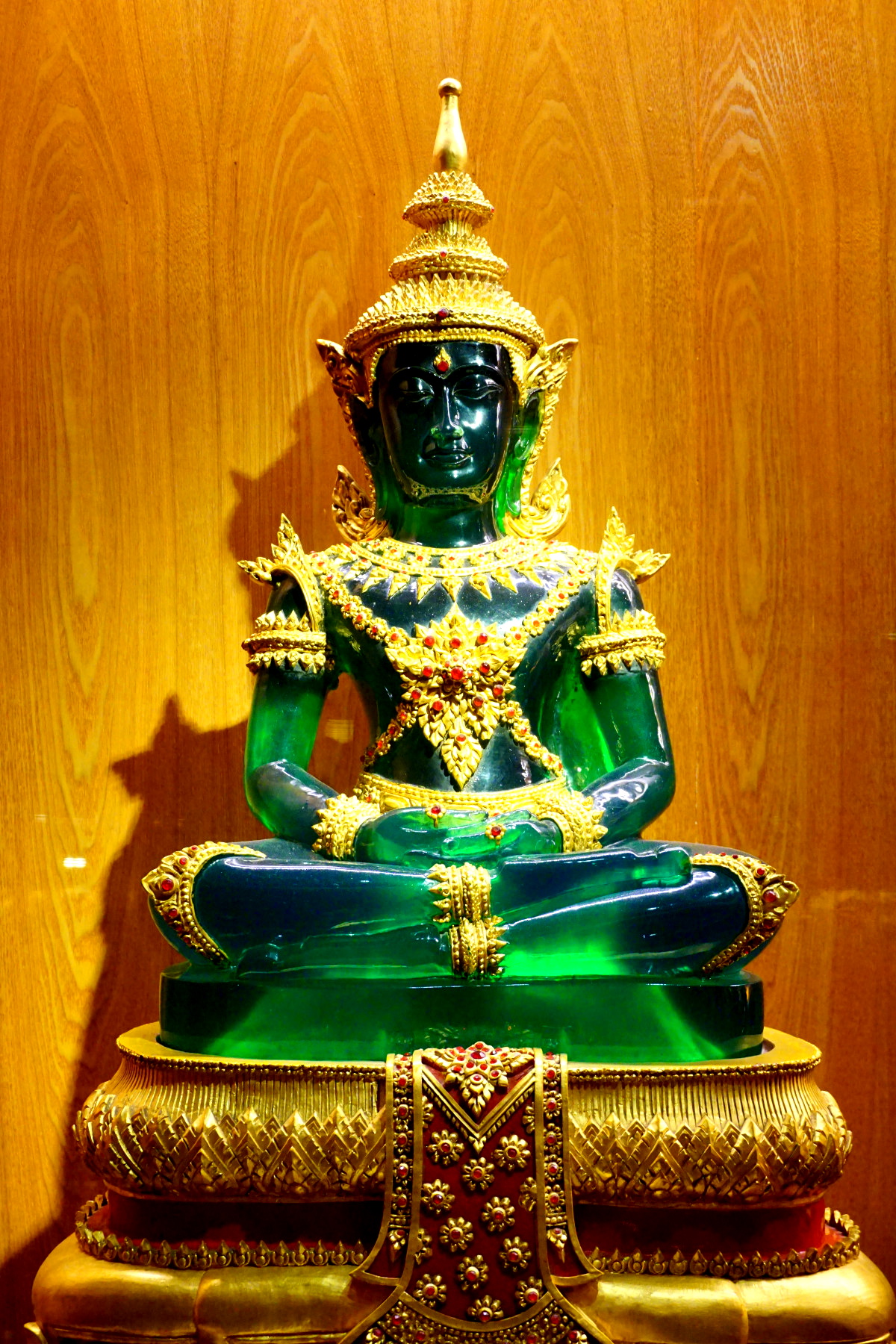 Pictured above: Emerald Buddha, Buddha Tooth Relic Temple, Singapore | Image credit: Photo Dharma from Sadao, Thailand, CC-BY-SA-2.0
Pictured above: Emerald Buddha, Buddha Tooth Relic Temple, Singapore | Image credit: Photo Dharma from Sadao, Thailand, CC-BY-SA-2.0
Emeralds in Royal & Noble Heritage
The association between emeralds and royalty increased over time. European royals and nobles started wearing the May birthstone more during the Renaissance.
You can learn more about these royal emeralds in our guide to 7 famous emeralds.
Some emeralds not mentioned in that guide:
Emerald ring given by Pope Innocent III to King Richard the Lionhearted or King John around 1200 AD
Holy Grail of Arthurian lore, said to be made of emerald and possess various powers
Tiara with emerald centerstone given by Napoleon Bonaparte to Pope Pius VII in 1804
Vladimir Tiara, made for Russian Grand Duchess Vladimir and sold to Queen Mary I in 1921, who added her own 15 Cambridge emeralds
“Emerald” Buddhas, a sacred 15th century carving of Gautama Buddha made of jadeite and a 2006 version carved from a single 3,600-carat emerald
The May birthstone also has various pop culture references, like:
Emerald City featured in the 1900 L. Frank Baum novel The Wonderful Wizard of Oz and the 1939 film adaptation
“Emerald Isle” nickname for Ireland
Emerald Tablet, a legendary text said to contain universal and alchemic secrets
Rockefeller Emerald, the largest flawless emerald and most expensive emerald ever sold at $5.5 million USD
Despite their prestige, emeralds still form in the Earth like any other mineral!
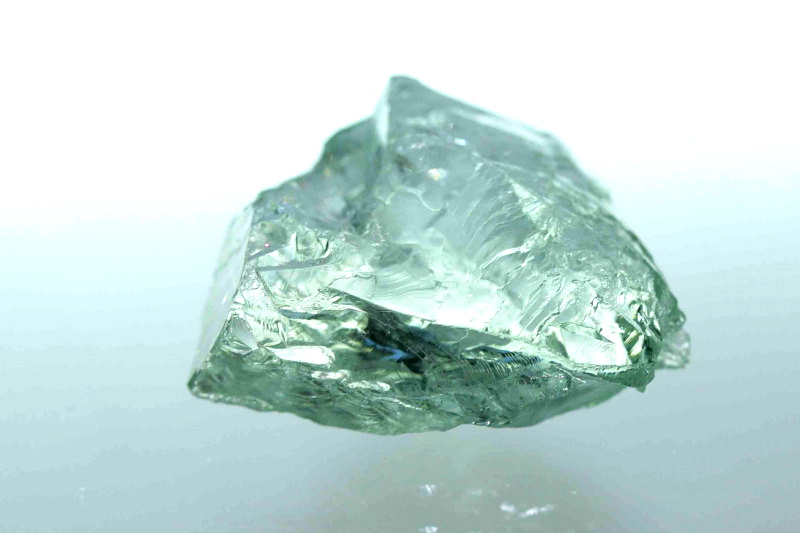
Geological Marvel: The Formation of Emeralds
Emeralds are varieties of beryl, a beryllium aluminum silicate mineral. They have pretty high hardness at 7.5 to 8 on the Mohs scale.
The May birthstone’s color comes from impurities of chromium, vanadium, or both. Part of emerald’s rarity is that beryllium is rarely present in the same area as chromium or vanadium.
In terms of where emeralds are found, Colombia is top-dog, producing 50 to 95 percent of the world’s emeralds. The second top source is Zambia, producing around 20 percent of the world’s gem-quality emeralds.
Colombia and Zambia are known for distinctive emerald colors.
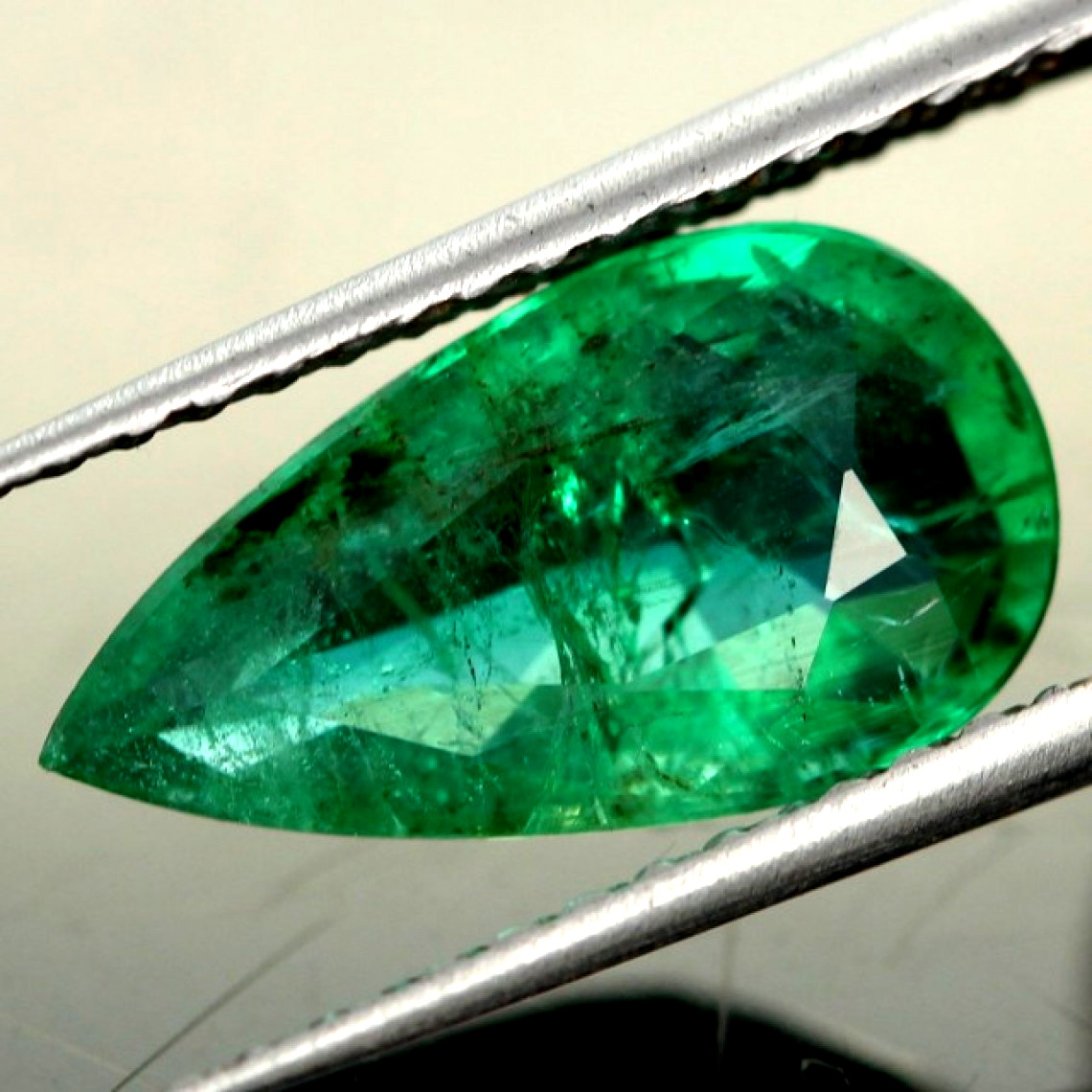 Pictured above: Faceted Zambian emerald
Pictured above: Faceted Zambian emerald
Mesmerizing Green: Understanding Emerald's Color Spectrum
Ever wondered, what is my birthstone color if I was born in May? Green! But the exact shade of green in emeralds varies. Undertones of yellow or blue are common, and tones or saturation levels vary.
Different distinctions between true emeralds and green beryl vary based on the coloring impurities and shade.
There are many types of emeralds, some distinguished by their color and source and other distinguished by optical phenomena:
Colombian Emerald: Most prized in deep green color from high chromium and low iron impurities; Prized for rarity and beauty, especially the Gota de Aceite emeralds variety with roiled appearance
Zambian Emerald: Bluish-green, darker than Colombian, usually less included than Brazilian
Brazilian Emerald: Light green, usually yellowish, less transparent than Colombian, usually included
Trapiche Emerald: Naturally formed radial pattern with 6 black spokes resembling a wheel
Star Emerald: Displays a multi-rayed “star” of reflected light via asterism
Cat’s Eye Emerald: Displays a single ray of reflected light via chatoyancy
The best emerald gemstones are bluish-green with medium-dark tones and heavy saturation, but color is just one factor of this May birthstone’s value.
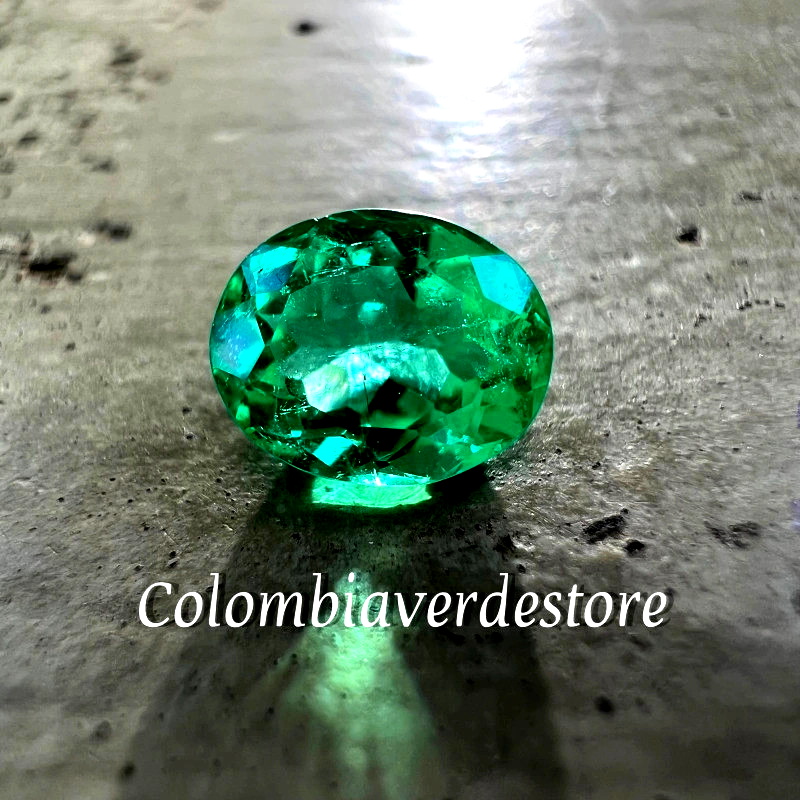 Pictured above: Faceted Colombian emerald with mild oil treatment
Pictured above: Faceted Colombian emerald with mild oil treatment
The 4 Cs: Evaluating Emerald Quality
When grading or certifying the emerald birthstone, gemologists prioritize color, then clarity, followed by cut, carat weight, and treatments.
Color
Most gemologists only classify green beryl as emerald if it has a primary green hue and medium to dark tone. High saturation and purer green colors mean higher value.
Clarity
These May birthstones are Type 3 colored gemstones, meaning visible inclusions are almost always present. As such, emeralds without inclusions visible to the naked eye are quite valuable.
Many heavily included emeralds appear cloudy. There are many types of emerald inclusions. Often, emeralds are treated to improve their clarity.
Cut
The best emeralds are faceted well to maximize color and uniformity, since the stone’s dispersion is rather low.
Many of these May birthstones are faceted with the “emerald cut,” a table cut developed in the 1500s for emeralds to prevent chips or cracks while emphasizing the stone’s color.
Lower-quality emeralds or emeralds with optical effects are cut into cabochons.
Carat Weight
Like other precious gemstones, emerald’s price-per-carat will increase with larger sizes.
Treatments
Most emeralds are treated via oiling, which improves clarity, durability, and sometimes color by filling in cracks. Lapidarists may use oils, polymers, or epoxy resins for the treatment.
Grading labs will categorize the level of enhancement as none, minor, moderate, or highly enhanced.
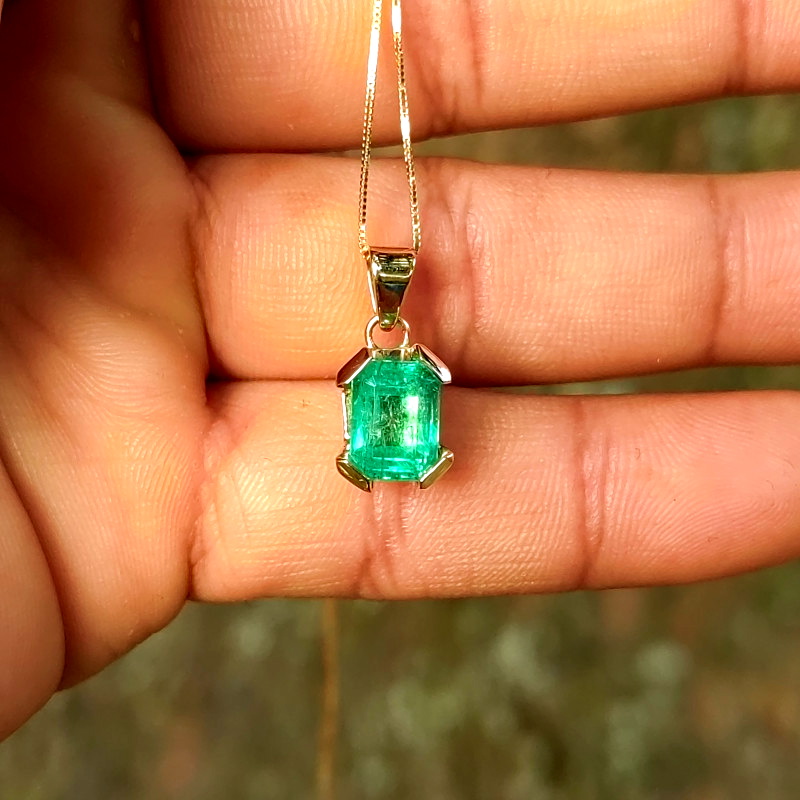
Beyond Aesthetics: Emeralds' Symbolism and Mystique
Emeralds are associated with growth, rebirth, and fertility, just like the spring season. The May birthstone meaning also extends to loyalty, friendship, and good luck.
Faithfulness
In Greek mythology, emeralds depicted love and wearing them protected couples from being unfaithful. People believed that an emerald would glow brighter when worn by a pure heart. If the shade faltered from its true green then the wearer was thought to be unfaithful.
Friendship
Similar to faithfulness, emeralds depict the unconditional loyalty between friends. Some friends choose to wear emerald friendship bracelets to symbolize their bond.
Good Luck
Mughal emperor and creator of the Taj Mahal, Shah Jahan, inscribed scriptures into emerald talismans. In the Veda, the Hindu text, emeralds are described as the gem of good luck, capable of improving a person’s wellbeing. In Chinese culture, certain days of the week bring good luck to those wearing emeralds.
As a healing stone, some of emerald’s most touted benefits include improving vision, cleansing the body of illness, and facilitating clairvoyance, especially when used as a third eye chakra stone.
The Ethical Emerald Pursuit
Like the ethical dilemmas surrounding conflict diamonds, many conscious consumers worry about the labor conditions and sustainability of emerald mining.
A major factor of knowing if an emerald was ethically sourced is knowing where it came from, or “transparency of provenance.” That means working with reputable, properly vetted suppliers and industry associations.
Luckily, it’s easier to identify an emerald’s origin than a diamond’s, especially with processes like the Emerald Paternity Test created by Gemfields and Gübelin Gem Lab.
Another possible workaround is opting for synthetic emeralds, which are lab-created with all the same physical and chemical properties of natural emeralds.
Synthetic emeralds lack the hazardous labor conditions of obtaining natural emeralds, with a significantly lower environmental impact.
Plus, synthetic emeralds are much more affordable than natural emeralds!
Speaking of alternatives, are there multiple birthstones for May? According to some sources, yes!
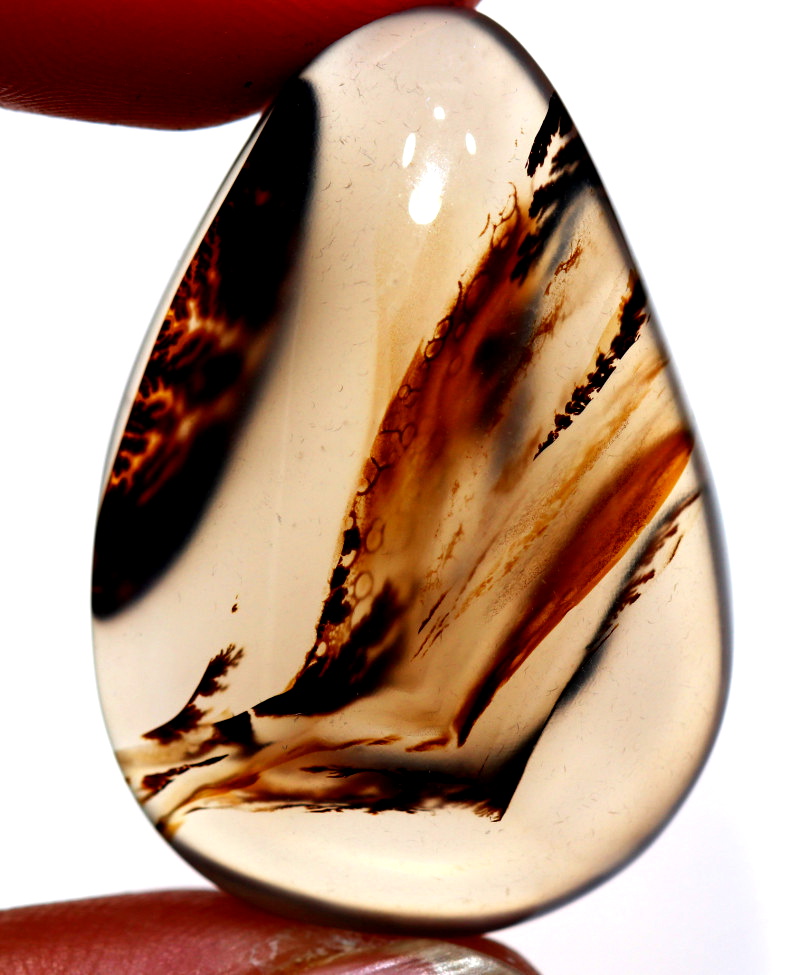 Pictured above: Agate cabochon
Pictured above: Agate cabochon
Alternative May Birthstones
The list of May birthstones and crystals doesn’t end at emerald. For one, agate is actually the original May birthstone in many historical interpretations.
Of course, the chalcedony variety chrysoprase is listed as an alternative May birthstone in many lists. Nicknamed the “Stone of Joy,” chrysoprase is a lighter apple green gem perfect for Gemini signs.
Among the mystical birthstones, a list rooted in Tibetan astrology, sapphire is the May birthstone. This corundum variety is another precious gemstone with an array of colors suited to any May-born Taurus sign’s taste.
You can also get a more affordable May birthstone with these emerald substitutes:
So, how do you use these May birthstones?
Personalized May Birthstone Gifts & Celebration
Birthstone jewelry is a meaningful gift to celebrate a loved one, and emerald May birthstone jewelry can be customized, simplified, or elaborated to match the person’s personality.
Whether emerald, agate, or another birthstone, here are some May birthstone gift ideas:
May birthstone ring with an emerald-cut emerald
Earrings featuring emeralds and chrysoprase
Necklace featuring May birthstone and the gift-giver’s birthstone
Charm bracelet with May birthstone and other personalized charms
Watch with encrusted May birthstone
Watercolor print of May birthstone with its properties
For many cultures, emeralds represent rebirth. We can think of no better way to march into your next year of life than with a renewing (and radiant) emerald gemstone!
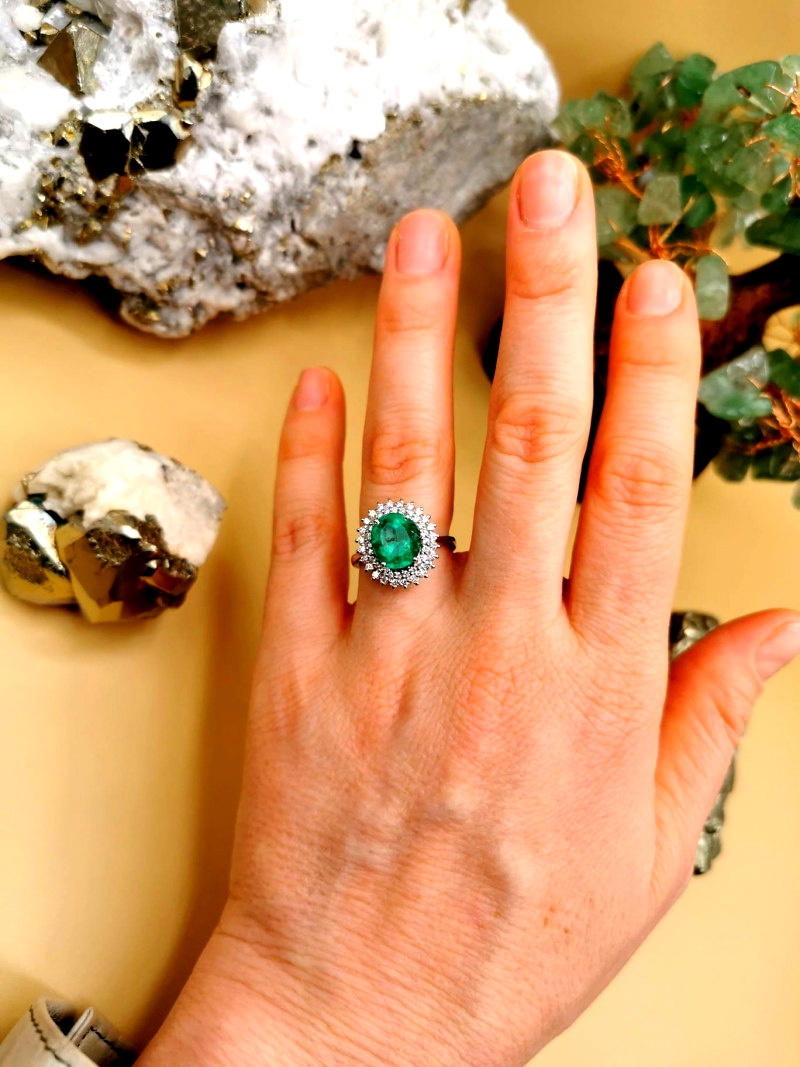
Come What May, May Birthstones are Timeless!
May is the peak of flourishing flora, and the May birthstone emerald parallels that natural beauty. But unlike the ever-changing seasons, May birthstones are charming tokens perfect for any time of year!
Does emerald, agate, or another May birthstone suit your fancy?
Find traditional and alternative May birthstones from our hundreds of gemstones available!
Search the Gemstone Encyclopedia
Related Auctions
Related Articles
Everyone has a gemstone that corresponds with their star sign. These are also known as your Star Stone. Learn more about these stones and find out what your Star Stone is.
10th May 2018
Originally the Birthstones or gemstones were associated with a zodiac sign or the month of a individuals birth. Find out what your stone is and view the stones we have for sale
8th Feb 2021
There are so many tools on the market for testing a gemstone, but what are the main tools required for simple analysis. Lets look at four tools for gemstone testing.
4th Mar 2020
Latest Articles
Friedelite is an uncommon pink, red, or brown manganese silicate mineral best known from New Jersey and South Africa. Learn the prices, properties, uses, and history of friedelite gemstones.
23rd Dec 2024
Shortite is a rare mineral and rarer gemstone, usually found as colorless or yellow wedge-shaped crystals. Learn the value, history, and properties of shortite in this guide!
9th Dec 2024
Senarmontite is an uncommon antimony mineral mostly used industrially but occasionally collected as rare gems or pearly crystals. Find out all of the traits, uses, prices, and history of senarmontite.
27th Nov 2024
Article Categories
How To's is where you will find helpful articles from gem Rock Auctions on how to cut gemstones, select gemstones and buy gemstones.
9 Articles





